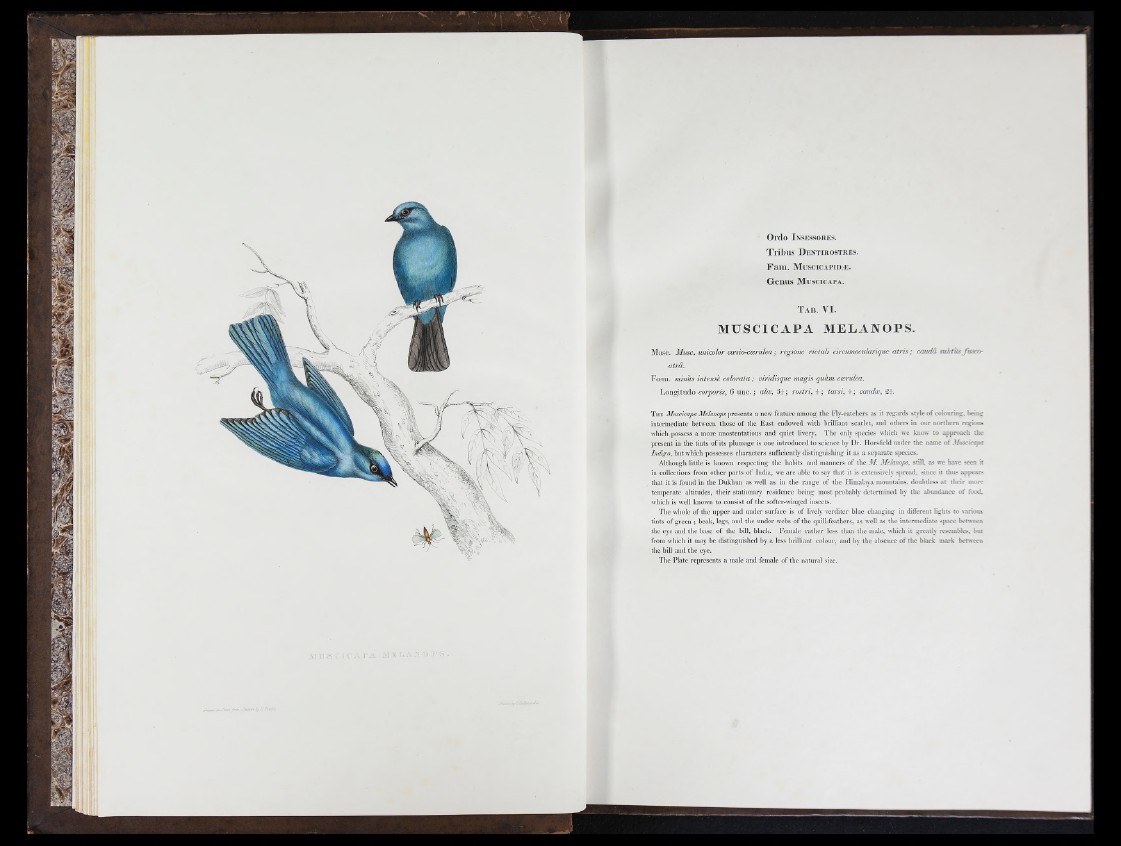
Ordo I n s e s s o r e s .
Tribus D e n t ir o s t r e s .
Fam. M u s c ic a p id a í .
Genus M u s c ic a p a .
T a b . VI.
MUSCICAPA MELANOPS.
Ma se . M u s e , unicolor ccesio-cccrulea; regione r ic ta li c irc im o cu la riq u e a t r i s ; ca u d a su b tu s J uko-
a tra .
m in u s in ten sé c o lo ra ta ; virid isq u e m a g is q u dm ccerulea.
Lou g itu c lo corporis, 6 u n c . ; alce, 3 1 ; ro s tr i, i ; ta r s i, -f; cauche, -2h
T h e Muscícapa Mclano]}S presents a new feature among the Fly-eatchers as it regards style o f coloüring, being
intermediate between those of the East endowed with brilliant scarlet, and others in onr northern rerioiB
M'hicli possess a more unostentatious and quiet livery. Tlic only species whicli we know to approach the
present in the tints of its plumage is one introduced to science by Dr. Horsfield under the name o f Mu sc ka p t
Indigo, but which possesses characters sufficiently distinguishing it as a separate sjiecies.
Although little is known respecting the habits and manners of the M . Me/anops, still, as we have seen it
in collections from other jiarts of Intlia, wc arc able to say that it is extensively spread, since it thus appears
that it is found in the Dukhun as well as in the range of the Himalaya mountaius. doubtless a t their more
tcinjieratc altitudes, their stationary residence being most jirobably determined by the abundmice erf" food,
wliich is well known to consist o f the softcr-wiiigcd insects.
'riie whole o f the ujijicr and under surface is o f lively verditcr blue changing in ditfereut lights to various
tints of grccii ; beak, legs, and tlie under webs of the quill-fcatlicrs, as well as the intcrmctliato space hetvreen
the eye and the base of tlie liill, black. Fcinalo ratlicr less tbaii the male, which it greatly n.'seiubk's, hut
from which it may be distinguished by a less brilliant colour, and by the absence o f the black m;irk between
the bill and the eye.
The Plate represents a male and female of the natural size.